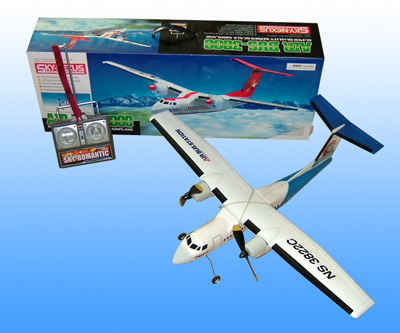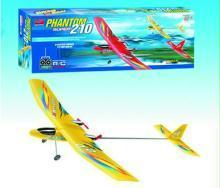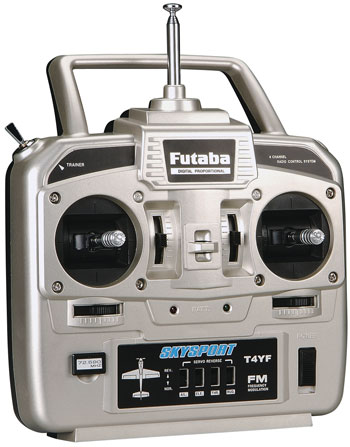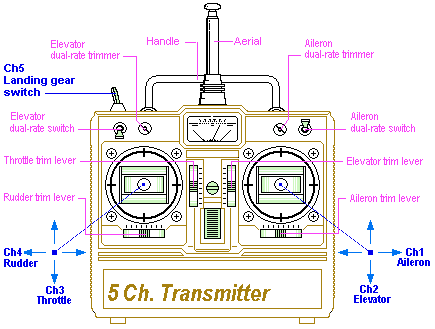

Aeromodelling basics - Radio control - Learning to fly Radiocontrol aeromodel by yourself.
Let us divide us into 3 types.
1.Casual - i just want to try it out as a cheap flying toy
2. Moderate - i want to be a flyer - i may stick on if i am interested
3. Hardcore - come what may i am going to be there and do aeromodelling and fly models.
Cost of entry.
Casual - 2000/- Rs ( about 40 $)
Moderate - 6000/- Rs ( about 120 $)
Hardcore - 15,000/- and above (350 $)
What is in the package -
Casual - 2000/- Rs ( about 40 $) - radio control flying planes are avilable in most toy shops and these will give an idea of how to start on the hobby and with some luck you will be able to get repeated sucessful flights.( provided you dont crash the toy too much)


Moderate - 6000/- Rs ( about 120 $) - A four / three channel parkflyer with electrical motors and radio and ready to fly. Take some help and learn to fly it. else read the fly by own lesson below and all the best. if you turn out to be a sucessful flyer and like the same and feel like going up the ladder present the model to someone and read hardcore.

Hardcore - 15,000/- and above (350 $) - Four channel radio equipment - One trainer model - One engine ( engine can be electric or fuel based mechanical engine)
My suggestion - Go for electric as fuel engines are on the way out. Also learning your way how to tame a fuel engine is a topic in itself.



Before You Start :- Flying a powered aeromodel is not a childs play - Dont even think of it even if you are a pilot of full size aircraft. Caution is the word. learn and understand the basics. Take all the help you can. All the preparation you do before your flight will decide - whether you will continue to be a happy flyer or ..... better part of your hard earned money is in pieces like your model... why did i ever start with this hobby at all.... Be the happy flyer.
If you choose a light aeromodel or a glider you can learn to fly it yourself. Some practice on the computer goes a long way in getting your way around in the air. Try the FMSsoftware ( Flying Model Simulator) it is free and good enough to get you going. If you are having a transmitter for RC you can buy a cable that will enable you to use the Free FMS software with your transmitter.
 5
Channel Radio transmitter explained
5
Channel Radio transmitter explained
Some basics on flight
How airplanes fly: When the wing moves forward the air lifts it. Too slow, no lift and it falls out of the air -- it stalls. So, it needs flying SPEED either from a motor and propeller, or by descending and gliding. The wing is lifting all the time it's moving forward -- whether itís upside down, in a turn, inverted, or doing aerobatics -- there is always lift from the wing even though the lift might not be straight UP as it is in level flight. The airplane makes right or left turns by tilting in the direction of the turn so that some of the wingís lift is angled partly to the left or right. To turn an airplane you tilt the wings with the ailerons or with the rudder in the direction you want to turn. To make the airplane go UP you give an UP command to the elevator. The elevator surface angles UP and the air thatís hitting it blows the tail DOWN and the nose UP. When the airplane goes UP it slows down. If it goes too slow the lift stops and the airplane falls -- stalls.
when you tilt the airplaneís wing in the direction that you want it to turn, the airplane will continue to turn as long as the wing is tilted in that direction. But you will NOT be holding the control stick in the direction of the turn -- you will have the control stick near NEUTRAL during the turn. To STOP the airplane from turning you move the control stick in the opposite direction from the turn so that the wings level out. "Beginner's" airplanes have a built-in tendency( because of the upward dihedral of the wings- means the upward angle of the wings) to automatically come back to level flight if you let go of the control stick.
Pick out an airplane that can fly all by itself without you
controlling it. Donít pick a low-wing, aerobatic airplane. The best choices are
gliders that use electric motors for power. Gliders can glide straight ahead all
by themselves (if they do not have a warped wing ) without you doing any
controlling from the radio transmitter. If you want to fly without an instructor
these glider type airplanes will fly themselves while you are trying to figure
out how to make them go some other direction. You need this stability while you
learn how to fly. The second best choice is a non-glider (powered airplane) that
has the wing on the top of the fuselage and which is advertised to be a good
training airplane.
Before you go out there and fly the stuff, get used to the thing on the ground. You should be thoroughly familiar with ď when I move this stick on the transmitter what will happen to the model in the airĒ practice this on the ground. Hang the model in front of a pedestal fan with suitable thread and practice some flying as due to the fan, the model will move a little the way you operate the controls on your transmitter. Do this standing in front of the model and behind. Notice the difference. Practice again and again well...... on the ground. Then u have a better chance to live in the air. GOOD LUCK AND HAPPY FLYING.